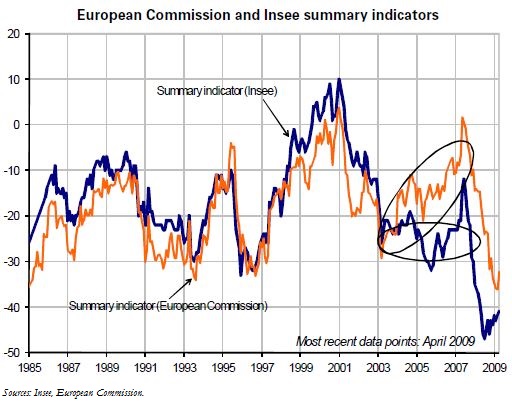Trésor-Economics No. 58 - Survey of household confidence and French consumer spending
Insee's monthly consumer confidence survey allows us to model households' behaviour with regard to their consumption of goods and services. However, this model is weaker when the cycle goes into reverse.
The monthly consumer confidence survey administers eleven questions to ascertain households' perceptions of their economic environment. Replies are synthesised in the indicator of consumer confidence, which presents a fair view of the common trend running through the eleven opinion balances.
Until 2003, consumers' responses were directly linked to the change in unemployment. Inflation concerns appear to have gained in importance between 2003 and 2007, while the link between unemployment and the survey's overall findings weakened, particularly when unemployment fell. With the current crisis, unemployment has re-emerged as a key determinant of responses to the survey.
In fact, consumer responses to the survey appear to be influenced above all by what is most negative in their environment, with inflation concerns prevailing when this is high, and unemployment concerns moving to the fore when that is high.
The link between trends in the summary indicator and those for household consumption is too weak to produce a reliable forecast of consumption in the short-term based on this indicator alone, especially between 2003 and 2007, when the trends were reversed. On the other hand, by using some of the survey balances we can chart most of the dynamics of consumption in the short term.
